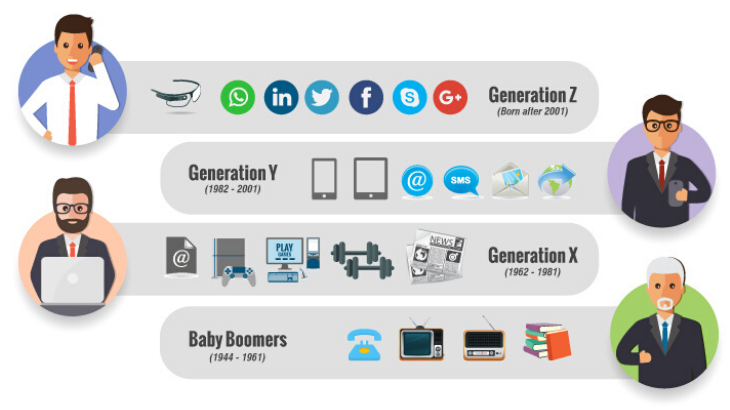According to the World Population Report of 2015 published by the United Nations, the global population of people over the age of 60 years and above is expected to grow by 56% (approximately 901 to 1.4 billion) by the year 2030. Although the impact of the aging population will vary from country to country, leaders around the world are grappling with the implications of changes in the age distribution of the population and consequently, the workforce. The declining workforce, increase in the age dependency ratio and ratio of working-age to old-age individuals is impacting workplace function greatly. Thus, it cannot be stressed enough that the need of the hour is to build workplaces that will suit both the existing and future demand of the age diverse workforce.
Workforce has always been multi-generational, what makes it critical to address the changing age demographics at work now is the fact that over half of the workforce will be above 60 by 2030. Policy and ergonomic changes at workplace are just a couple of steps in this direction, but corporates must work in conjunction with policy makers to ensure that the changing age dynamics does not impact the productivity of the nation.
Workplace design for the blended workforce
The physical design of the workplace needs to be future-proofed by creating an enriching environment that is supportive of training the newer generation as well as be practical for the older. Workplace design and build consultants are now teaming up with human resource professionals to create work environments conducive to adaptability and scalability of the design to help bridge the gap between generations. They are at their innovative best as they create an environment that facilitates efficiency and adaptability keeping multi-generational demographics in mind.
Besides design, corporates are also overhauling their HR strategies to retain the blended workforce and attract newer talent – be it by changing their training methods, introducing flexible work timings, option to work from home or operating out of a virtual office. Managing workplace expectation is another area of focus.
How is the issue tackled?
Organisations
Some organisations that have taken cognizance of this fact and have worked towards better blending of the workforce are:
BMW, the manufacturing giant has gone ahead and redesigned its production line. The manufacturing giant introduced:
- Slightly slower production line: A slowing down the production line by a bit helped people over the age of 50 working in the assembly line to take a breather and allowed them to work at their own pace
- Ergonomic back support: This step was applied throughout the offices and the manufacturing units to facilitate better posture and hence avoided injuries related to seating
- Better lighting: The company introduced lumen controlled lighting throughout the units to suit the needs of the older generation as they have different lighting needs when compared to the new gen workers
- Robotics: Mechanised robots were introduced to handle basic manual works which eased physical labour
Migros, a supermarket chain based in Switzerland retains its employees by using a three-pronged approach:
- Lifelong learning: It provides employees with 10,000 CHF (Swiss currency) annually to take up training or classes to enhance their personal or professional learning
- Job Flexibility: Migros introduced more than 300 types of full-time and part-time jobs throughout its periphery wherein employees can apply for jobs which are most suited to their needs and choices. Flexibility to change sectors (for example, from heavy lifting manual job to a desk job) is made available to the entire diverse workforce. Also, transfer to working in a location close to place of comfort is highly encouraged
- Health benefits: The company has also taken a step ahead and introduced several free health screening services on-site at least once every year, no matter what the age. Optional free health check-ups with collaborated hospitals are also made available to employees after they cross a certain age
- Additional Leave: Migros has also introduced one additional week of holidays for workers who have reached the age of 50
Countries
Japan among other countries in the world is witnessing the phenomenon right now as its workforce is estimated to fall by 12.4% amounting to 7.9 million people by the year 2030. Other countries which will face similar situations are South Korea, China, Germany and Spain where more than 50% of the workforce will be retiring soon.
Japan, where the labour force with highest number of baby boomers in the industrialized world, is taking every measure to try and retain its workforce, by improving the labour market conditions, postponing its retirement age limit from 55 to 60 years, defining minimum age for qualifying for social security pensions.
In Conclusion
Pending further research, structural changes in the workplace design may not be necessary to accommodate the specific needs of the aging workforce. Having said this, we now have multiple questions in front of us. To what extent, do corporates give importance to design elements and attributes? Does the physiological decline of the aging worker impact his decisions? How else can the older generation’s contribution be leveraged upon?
